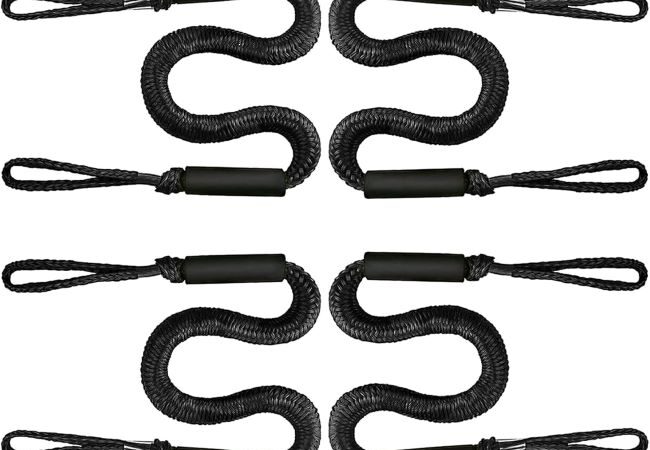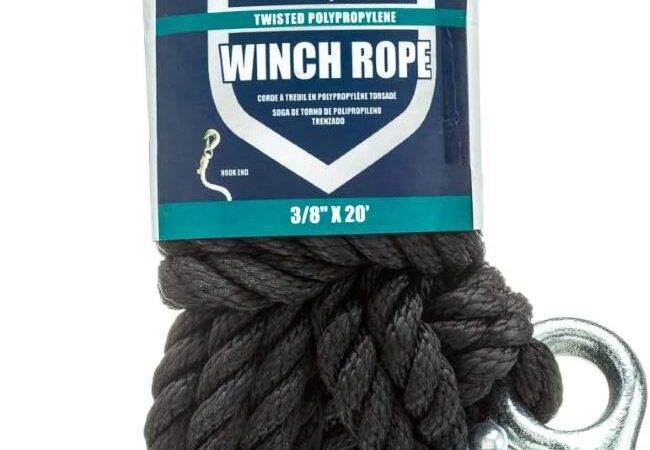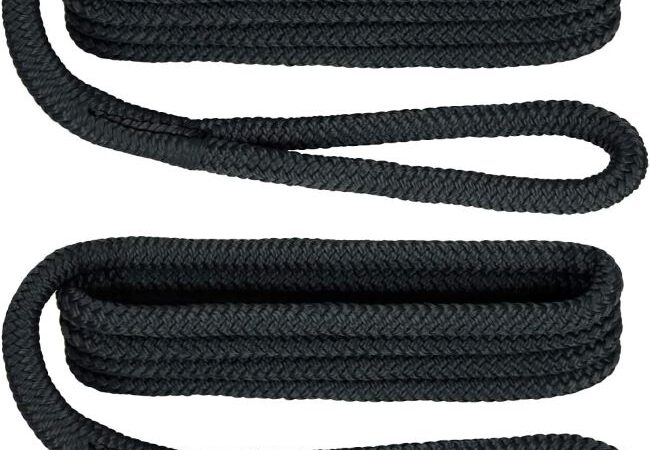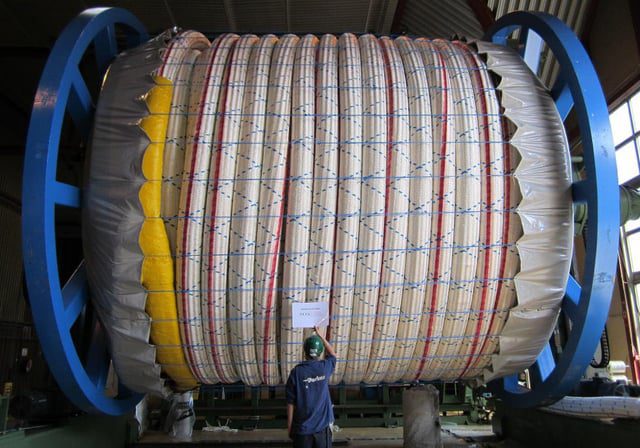
World’s Strongest Rope: Unraveling the Ultimate Tensile Titans
The world’s strongest rope is made from ultra-high-molecular-weight polyethylene (UHMWPE). This synthetic fiber boasts exceptional strength-to-weight ratio and durability.
Contents at a Glance
ToggleRopes play a critical role in various industries, from maritime to mountain climbing, and the quest for the strongest rope has led to significant advancements in materials science. UHMWPE ropes are now at the forefront, offering unparalleled tensile strength while remaining lightweight.
These ropes resist abrasion, UV rays, and chemicals, making them ideal for the most demanding applications. They are essential in situations where failure is not an option, such as in rescue operations, space missions, and heavy industrial lifting. Consumers seeking reliability and safety consistently turn to UHMWPE ropes for their superior performance under stress.
The Quest For Strength
The Quest for Strength has always driven humanity’s innovations. In the world of heavy lifting and tough tasks, the strongest rope can mean the difference between success and failure. This section explores how the strongest rope in the world came to be.
Material Science Breakthroughs
Recent years have witnessed incredible advances in material science. Scientists create ropes stronger than ever before. Let’s dive into the materials that set new records for strength:
- Ultra-High-Molecular-Weight Polyethylene (UHMWPE): This synthetic fiber boasts extreme strength-to-weight ratios.
- Carbon Nanotubes: These tiny structures are stronger than steel and light as plastic.
- Zylon: It resists high temperatures and shows remarkable strength.
These materials form ropes that can tow ships or lift cars. They support bridges and even space elevators in theory. The future of strong ropes looks brighter than ever thanks to these breakthroughs.
Historic Milestones In Rope Strength
History marks several milestones where rope strength has leaped forward. Here are some highlights:
| Year | Milestone | Material |
|---|---|---|
| 2000s | Introduction of UHMWPE | Dyneema |
| 1990s | Development of Zylon | PBO Fiber |
| 1980s | Use of Kevlar in ropes | Aramid Fiber |
Each development has served industries worldwide. The ropes of today are not just stronger. They are also lighter and more durable. These ropes help in rescue missions, secure heavy loads, and even enable extreme sports.

Credit: usarope.net
Material Mastery
The quest for the world’s strongest rope is a tale of innovation and mastery over materials. From the high seas to the highest mountains, ropes have been pivotal in human endeavors. As we delve into this exploration, we understand that the strength of a rope lies in its fibers. Let’s unravel the secrets of rope materials.
Natural Fibers Vs. Synthetic Marvels
Natural fibers once ruled the roost in rope making. Hemp, sisal, and manila were common choices. They offered grip and were eco-friendly. Yet, these fibers had limits. They could rot, weaken when wet, and break under heavy loads.
Synthetic ropes brought a new era of strength and durability. Materials like nylon, polyester, and polypropylene lead the charge. They resist water damage and don’t easily break. Synthetic ropes are stronger than natural ones. They serve in various applications, from towing cars to mooring ships.
- Hemp: Traditional, biodegradable, but less durable.
- Nylon: Stretchable, resilient, excellent for dynamic loads.
- Polyester: UV-resistant, minimal stretch, great for static lines.
Nanotechnology In Rope Design
Rope design is now at the cutting edge with nanotechnology. Tiny particles work to make ropes incredibly strong. They are also very light.
Nanofibers are used to create ultra-strong ropes. These ropes can hold up cars and even airplanes. They are a game-changer in industries that require top-notch strength and safety.
| Material | Properties | Uses |
|---|---|---|
| Carbon Nanotubes | Super strong, lightweight | Space elevators, sports equipment |
| Graphene | High tensile strength, conductive | Electronics, medical devices |
Nanotechnology is not just about strength. It makes ropes safer too. These ropes can tell when they are about to fail. This is crucial for preventing accidents.
From the natural to the synthetic, from the macro to the nano, the journey of rope development is fascinating. The future of ropes is bright with materials that offer unmatched strength and safety.
Industry Titans
In the realm of heavy-duty applications, a conversation about the strongest rope isn’t complete without mentioning the ‘Industry Titans’. These companies have revolutionized the rope-making industry. Their products can lift, pull, and secure the heaviest loads imaginable.
Leading Manufacturers
The backbone of the strongest rope production lies with leading manufacturers. These brands stand out for their quality and durability.
- Dyneema – Known for ultra-strong fibers.
- Samson – Innovator in high-performance ropes.
- WireCo WorldGroup – Global leader with diverse products.
- Teufelberger – Specialist in fiber ropes and steel wire ropes.
- Marlow Ropes – British excellence in rope manufacturing.
Pioneers In Rope Technology
These companies aren’t just manufacturers; they’re pioneers in rope technology. Their research leads to groundbreaking innovations.
| Company | Innovation |
|---|---|
| Dyneema | Developed the world’s strongest fiber, Dyneema®. |
| Samson | Created ropes with unique coating for extra strength. |
| WireCo WorldGroup | Introduced high-tech synthetic ropes as steel wire alternatives. |
| Teufelberger | Integrated fiber and wire rope technologies. |
| Marlow Ropes | Pioneered in bio-based rope solutions. |
Applications Across Industries
The world’s strongest rope has a wide range of applications across various industries. Its exceptional strength and durability make it a key component in sectors requiring reliability under extreme conditions.
Maritime Reliance
The maritime industry depends heavily on the world’s strongest rope. This rope ensures safety and efficiency in numerous maritime tasks:
- Mooring ships: It securely docks vessels to piers.
- Towing: Used for pulling ships or barges, particularly in rescue operations.
- Heavy lifting: Handles cargo operations, lifting heavy loads with cranes.
Longevity and resistance to saltwater make this rope ideal for maritime applications.
Mountaineering And Safety
In mountaineering, the need for reliable equipment is critical. The strongest ropes serve key functions:
- Climbing: Essential for the safety of climbers, supporting their weight.
- Rescue operations: Vital in emergencies to safely extract individuals.
- Securing equipment: Keeps gear firmly attached, preventing accidents.
These ropes are designed to perform under extreme environmental conditions, offering security and peace of mind for mountaineers.
Breaking Point
The breaking point of a rope defines its ultimate strength. This is the maximum load a rope can handle before it fails. Understanding the breaking point helps in selecting the right rope for various applications, ensuring safety and reliability.
Tensile Testing Explained
Tensile testing measures a rope’s strength. It stretches the rope until it breaks. This test provides vital data, such as the breaking point and elongation.
- Test setup uses a specialized machine.
- Rope is secured at both ends.
- Force applied gradually.
- Data recorded until rope breaks.
Record-breaking Performances
Some ropes set impressive records with their breaking points. These record-breaking performances showcase ropes that can lift heavy weights or endure extreme conditions.
| Material | Breaking Point (lbs) |
|---|---|
| Synthetic Polyethylene | 350,000 |
| Ultra-High-Molecular-Weight Polyethylene | 1,500,000 |
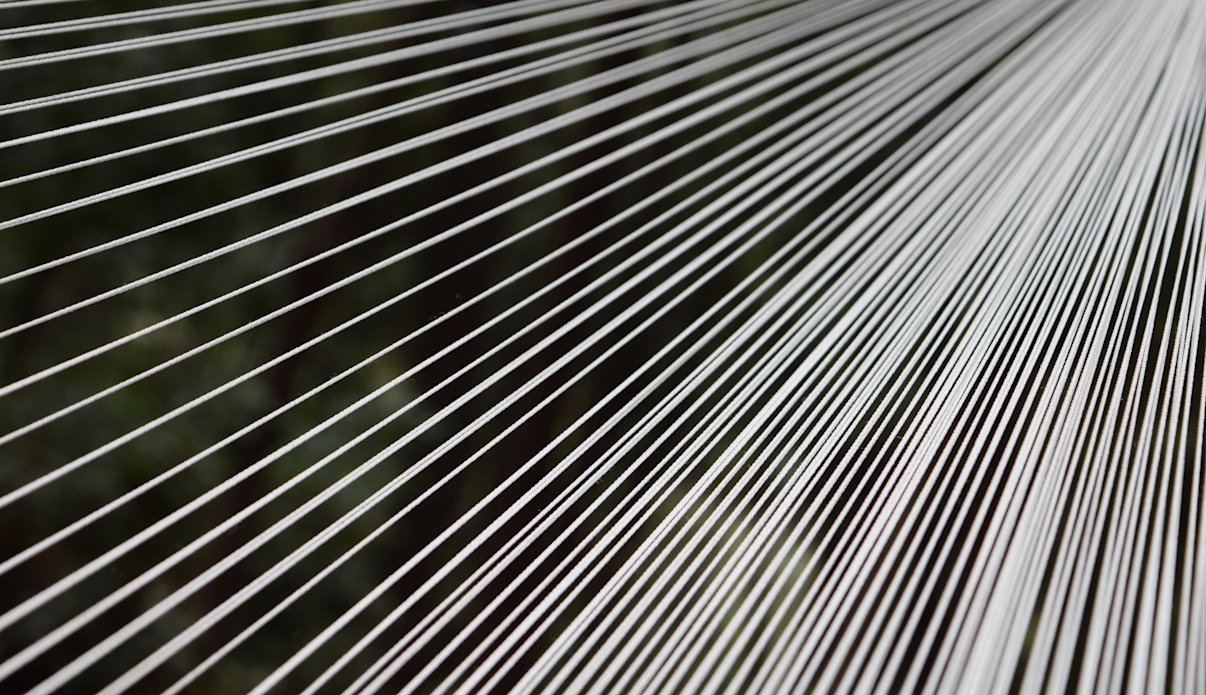
Credit: dynamica-ropes.com
Innovation And Sustainability
In the quest for the world’s strongest rope, innovators are weaving together strength and sustainability. This blend ensures that ropes not only endure the toughest conditions but also respect our planet. Let’s unravel the secrets behind these eco-friendly marvels.
Eco-friendly Materials
The strongest ropes now spring from materials kind to Earth. Manufacturers choose fibers that lessen environmental impact. These materials include recycled plastics and plant-based fibers. They offer exceptional durability and minimal ecological footprints.
- Recycled synthetics: Reduce waste and save energy.
- Natural fibers: Support sustainability and biodegradability.
- Hemp and sisal: Emerge as strong, renewable options.
The Future Of Rope Recycling
Rope recycling is pivotal for a green future. Innovators are developing methods to reclaim and repurpose old ropes. This process conserves resources and limits landfill waste.
| Recycling Step | Benefit |
|---|---|
| Collection | Gathers used ropes for recycling. |
| Separation | Sorts fibers for quality control. |
| Reprocessing | Transforms fibers into new products. |
Future technologies may allow ropes to be endlessly recyclable. This vision will create a closed-loop system, where ropes are made, used, recycled, and remade without waste.
Extreme Environments
In the world of engineering and technology, ropes are not just tools; they are lifelines in extreme environments. These environments demand materials that can withstand the harshest conditions imaginable. Here, we explore how the world’s strongest ropes serve crucial roles in space exploration and deep-sea operations.
Space Exploration Tethers
Space missions depend on high-performance materials. Ropes used as tethers in space must be exceptionally strong and resistant to temperature extremes. They secure astronauts during spacewalks and attach satellites to spacecraft. The features of these ropes include:
- High tensile strength to prevent snapping
- Minimal weight to ease transport and handling in space
- Resistance to ultraviolet radiation and other cosmic influences
Such ropes are often made from ultra-high-molecular-weight polyethylene (UHMWPE). This material maintains its properties even in the vacuum of space.
Deep-sea Anchoring Systems
Deep-sea anchoring systems rely on the world’s strongest ropes to withstand the ocean’s crushing depths. These ropes must resist extreme pressures and corrosive saltwater while anchoring ships and underwater equipment. Key characteristics include:
- High abrasion resistance to endure against rough sea beds
- Ability to absorb shocks and vibrations from ocean currents
- Chemical resistance to saltwater corrosion
Materials like nylon and polyester are common in these ropes. They provide the necessary durability and flexibility for deep-sea tasks.

Credit: www.mickeythompsontires.com.au
Consumer Access
World’s Strongest Rope – Consumer Access
Exploring the world of high-strength ropes offers endless possibilities. Users seek the strongest ropes for safety, durability, and efficiency. This section dives into how consumers can access these powerful tools.
Availability And Affordability
Finding the world’s strongest rope is easy. Many online stores and local shops stock these items. Specialty outdoor retailers offer a vast range. Let’s look at how availability and price affect your choice.
- Online Marketplaces: Websites like Amazon and eBay have diverse rope selections.
- Local Hardware Stores: They often stock high-strength ropes for immediate purchase.
- Specialty Climbing Shops: These stores provide expert advice along with their products.
Prices vary depending on material and brand. Synthetic fibers like Dyneema and Kevlar lead the market. They are strong but can be expensive. Nylon ropes offer a balance between strength and cost.
Choosing The Right Rope For Your Needs
Selecting the perfect rope is crucial. Consider what tasks you’ll tackle. Will you climb, tow, or hoist objects? Different ropes serve different purposes.
| Type of Rope | Best Use |
|---|---|
| Dyneema | Marine applications, towing |
| Kevlar | Heavy lifting, winching |
| Nylon | Climbing, rescue operations |
Thickness and length matter. A thicker rope can handle more weight. Longer ropes are useful for tasks like climbing or securing large items.
Check the rope’s rating. Every rope has a breaking strength limit. Ensure it fits your needs. Safety first!
Frequently Asked Questions
What Rope Is The Strongest?
The strongest rope is typically made from ultra-high-molecular-weight polyethylene (UHMWPE), known for its high strength-to-weight ratio.
How Strong Is Dyneema Rope?
Dyneema rope is exceptionally strong, boasting a higher strength-to-weight ratio than steel. It’s lightweight, yet offers superior durability and resistance to abrasion.
What Is The Strongest Metal Rope?
The strongest metal rope is typically made from braided steel, known for its exceptional strength and durability.
What Is The Strongest Fiber In The World?
The strongest fiber in the world is graphene, known for its exceptional strength and lightness. It surpasses all other known fibers in durability and tensile strength.
Conclusion
Selecting the world’s strongest rope is crucial for ensuring safety and efficiency in various tasks. Whether for industrial use, adventure sports, or everyday applications, the right rope combines durability, flexibility, and strength. Remember, the ideal choice varies based on specific needs and conditions.
Choose wisely to guarantee both performance and reliability in all your endeavors.

